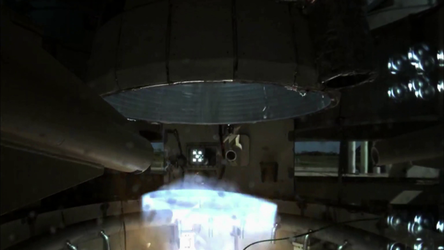Accept all cookies Accept only essential cookies See our Cookie Notice

About ESA
The European Space Agency (ESA) is Europe’s gateway to space. Its mission is to shape the development of Europe’s space capability and ensure that investment in space continues to deliver benefits to the citizens of Europe and the world.
Highlights
ESA - United space in Europe
This is ESA ESA facts Member States & Cooperating States Funding Director General Top management For Member State Delegations European vision European Space Policy ESA & EU Space Councils Responsibility & Sustainability Annual Report Calendar of meetings Corporate newsEstablishments & sites
ESA Headquarters ESA ESTEC ESA ESOC ESA ESRIN ESA EAC ESA ESAC Europe's Spaceport ESA ESEC ESA ECSAT Brussels Office Washington OfficeWorking with ESA
Business with ESA ESA Commercialisation Gateway Law at ESA Careers Cyber resilience at ESA IT at ESA Newsroom Partnerships Merchandising Licence Education Open Space Innovation Platform Integrity and Reporting Administrative Tribunal Health and SafetyMore about ESA
History ESA Historical Archives Exhibitions Publications Art & Culture ESA Merchandise Kids Diversity ESA Brand Centre ESA ChampionsLatest
Space in Member States
Find out more about space activities in our 23 Member States, and understand how ESA works together with their national agencies, institutions and organisations.
Science & Exploration
Exploring our Solar System and unlocking the secrets of the Universe
Go to topicAstronauts
Missions
Juice Euclid Webb Solar Orbiter BepiColombo Gaia ExoMars Cheops Exoplanet missions More missionsActivities
International Space Station Orion service module Gateway Concordia Caves & Pangaea BenefitsLatest
Space Safety
Protecting life and infrastructure on Earth and in orbit
Go to topicAsteroids
Asteroids and Planetary Defence Asteroid danger explained Flyeye telescope: asteroid detection Hera mission: asteroid deflection Near-Earth Object Coordination CentreSpace junk
About space debris Space debris by the numbers Space Environment Report In space refuelling, refurbishing and removingSafety from space
Clean Space ecodesign Zero Debris Technologies Space for Earth Supporting Sustainable DevelopmentLatest
Applications
Using space to benefit citizens and meet future challenges on Earth
Go to topicObserving the Earth
Observing the Earth Future EO Copernicus Meteorology Space for our climate Satellite missionsCommercialisation
ESA Commercialisation Gateway Open Space Innovation Platform Business Incubation ESA Space SolutionsLatest
Enabling & Support
Making space accessible and developing the technologies for the future
Go to topicBuilding missions
Space Engineering and Technology Test centre Laboratories Concurrent Design Facility Preparing for the future Shaping the Future Discovery and Preparation Advanced Concepts TeamSpace transportation
Space Transportation Ariane Vega Space Rider Future space transportation Boost! Europe's Spaceport Launches from Europe's Spaceport from 2012Latest
Ariane 6 long duration hot-firing test
Thank you for liking
You have already liked this page, you can only like it once!
Europe’s new Ariane 6 rocket goes through a full-scale rehearsal in preparation for its first flight, when teams from ArianeGroup, France’s space agency CNES, and ESA on the ground will complete a launch countdown rehearsal. The test includes the ignition of the core stage Vulcain 2.1 engine, followed by 470 seconds of stabilised operation covering the entire core stage flight phase, as it would function on a launch into space.
Coverage starts 20 minutes before engine ignition and continue five minutes after core stage operation, once the engine burns through all its propellant.
For this rehearsal, the boosters are not ignited, so Ariane 6 stays firmly on the launch pad at Europe’s Spaceport in French Guiana.
The eight-minute engine-fire trial reenacts how the Ariane 6 core stage will fire during a normal flight into space. The trial, conducted with a test model on the launch pad at Europe’s Spaceport is the longest ‘full-stack' run yet for Ariane 6’s lower liquid propulsion module equipped with a Vulcain 2.1 engine.
The Vulcain 2.1 engine will burn through almost 150 tonnes of propellant supplied from the Ariane 6 core stage tanks – liquid oxygen and liquid hydrogen – supercooled to temperatures below -250°C.
The Vulcain 2.1 engine is an evolution of the Vulcain 2 engine that made Ariane 5 Europe's most successful launch system ever. The upgrade has a simplified and cheaper design and features new technology in the engine nozzle, while the ignition system has been moved from the engine to the launch pad to make the core stage perform better and cost less.
-
CREDIT
ESA - European Space Agency -
LICENCE
ESA Standard Licence
-
Closed captions available Captions and subtitles are available (automatically generated by YouTube) - select your language using the YouTube player controls. A non-YouTube version is available using the 'download' button above.
-
Documentary
-
-
-
-
-

Hot-fire test of Ariane 6 core stage on launch pad

Hot-fire test of Ariane 6 core stage on launch pad

Vulcain 2.1 static firing test

Vulcain 2.1 firing















 Germany
Germany
 Austria
Austria
 Belgium
Belgium
 Denmark
Denmark
 Spain
Spain
 Estonia
Estonia
 Finland
Finland
 France
France
 Greece
Greece
 Hungary
Hungary
 Ireland
Ireland
 Italy
Italy
 Luxembourg
Luxembourg
 Norway
Norway
 The Netherlands
The Netherlands
 Poland
Poland
 Portugal
Portugal
 Czechia
Czechia
 Romania
Romania
 United Kingdom
United Kingdom
 Slovenia
Slovenia
 Sweden
Sweden
 Switzerland
Switzerland


























